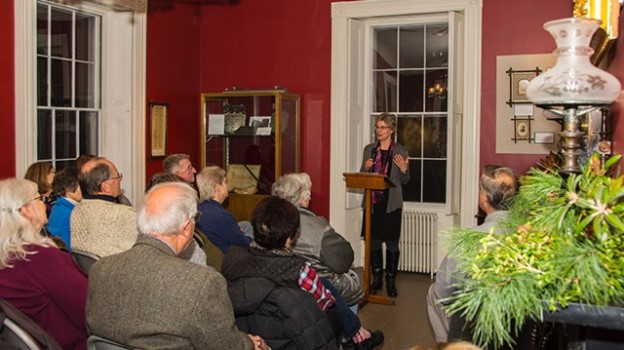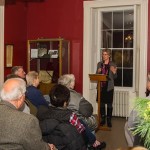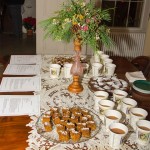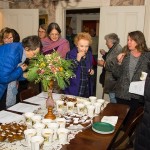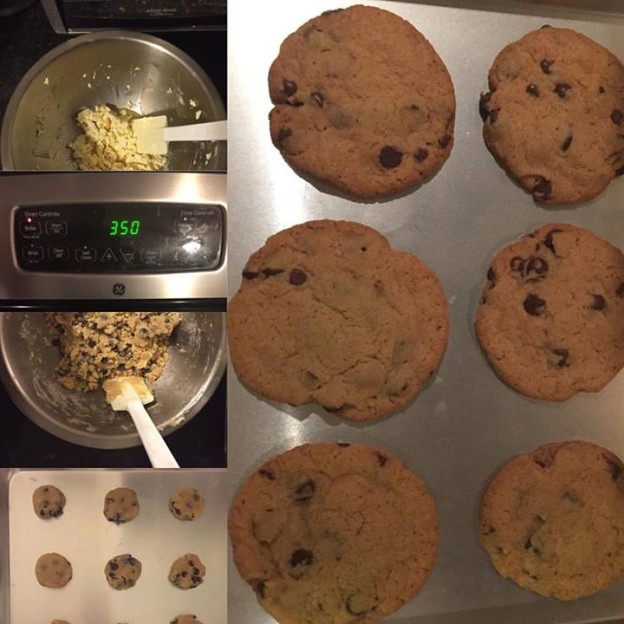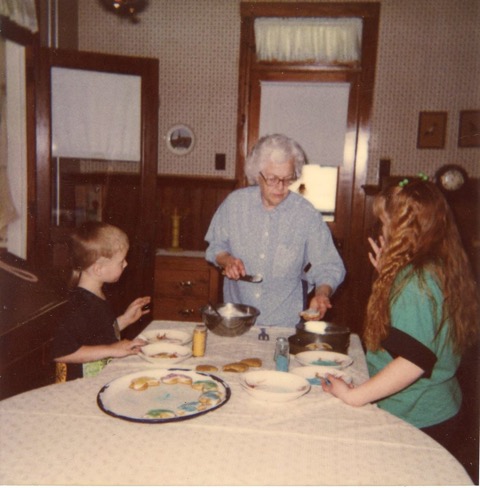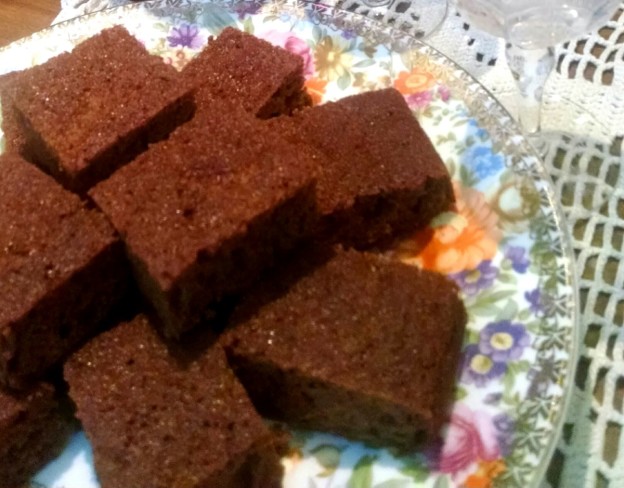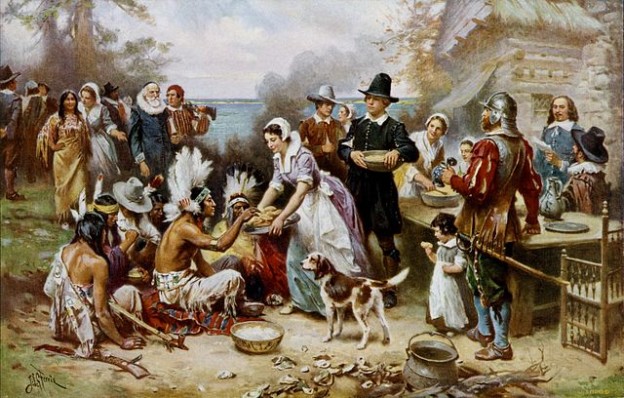On December 1, the Groton Historical Society welcomed sixty people to the beautiful Boutwell House for a program about the history of Christmas celebrations through popular foods of the 1770’s, 1850’s and 1930’s thanks to the Groton Commissioners of Trust Funds.
The presenter, Clara Silverstein, is the Community Engagement Manager for Historic Newton and a former food writer at the Boston Herald. She has published three cookbooks, including The New England Soup Factory. Clara blogs about historic recipes at heritagerecipes.com.
Participants were treated to samples of Sarah Boutwell’s Cider cake and hot cider prepared by Bobbie Spieglman, President of GHS, Bonnie Carter and Liz Strachan. The Boutwell House was decorated with festive greens, fruit, popcorn and cookies. These were provided by Penny Hommeyer, Lynne Kavanaugh and Linda Andelman. Outdoor planters were decorated by Ann White and Laura Semple. The Woman’s Club provided a decorative swag for the front door and the Nashoba Board of Trade donated poinsettias. Special recognition goes to the GHS program committee members, who did the prep work to bring this program to Groton, Nancy Barringer and Judith Adams.
3 Centuries of Holiday Celebrations in New England from John Ellenberger on Vimeo.
- Clara Silverstein speaks about "Ginger to Jello: an Unexpected Christmas History" in a December 2015 program.
- Historical foods!
- And there was much enjoyment.
